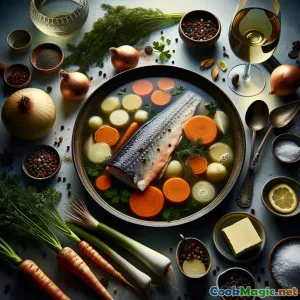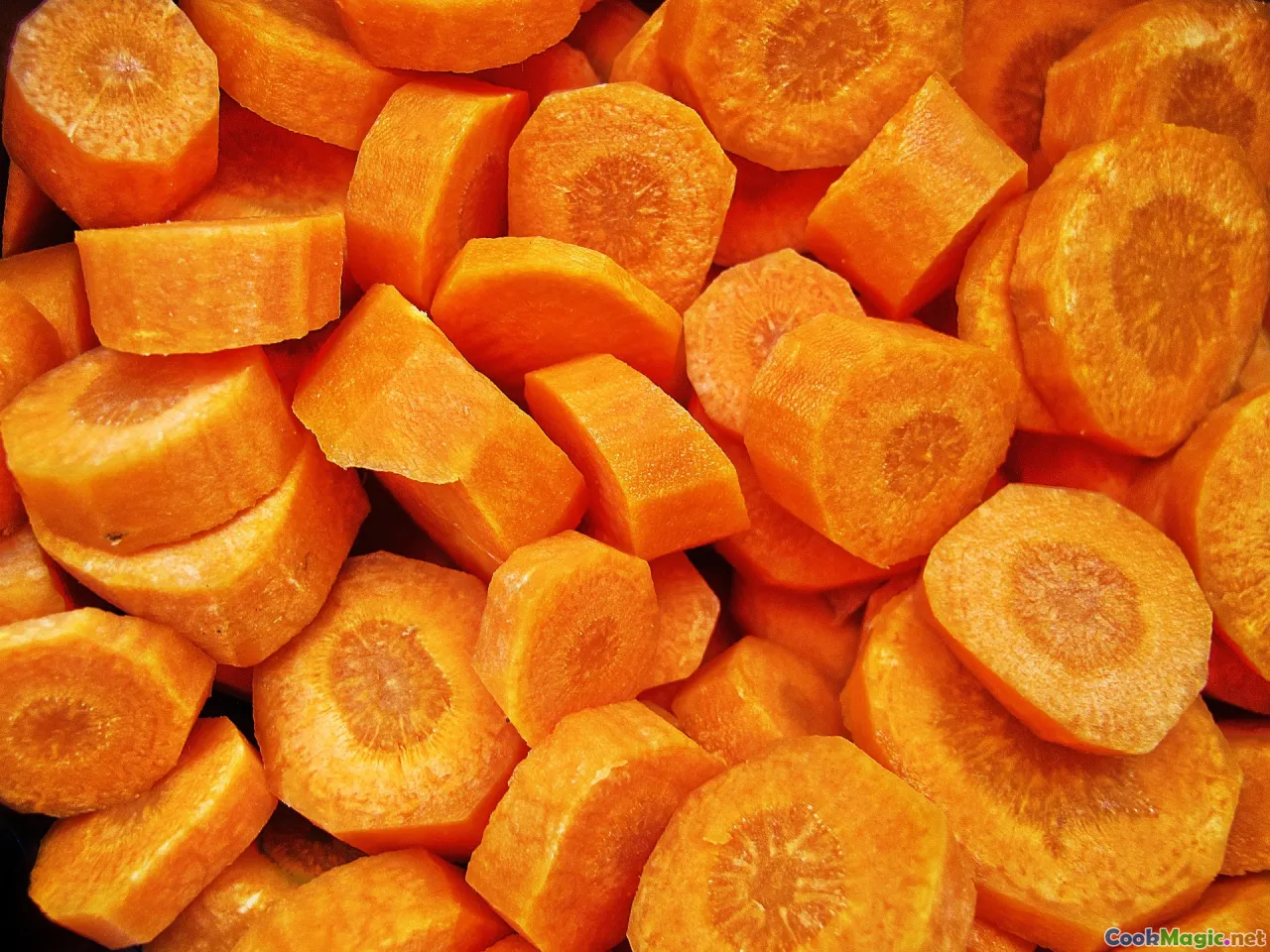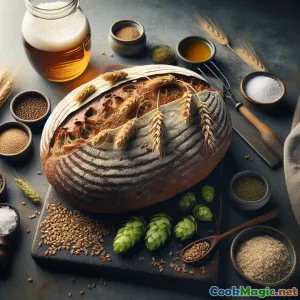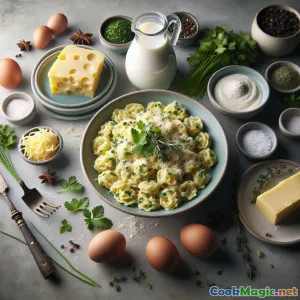
소박한 바바리안 차 브로스와 겨울 뿌리채소
(Rustic Bavarian Char Broth with Winter Roots)
(0 리뷰)재료
-
500 grams 북극 연어 필레
(껍질 없고 뼈 없는, 3cm 크기의 정육면체로 자른 것)
-
2 medium 당근
(껍질을 벗기고 주사위 모양으로 썰다)
-
2 medium 파스닙
(껍질을 벗기고 주사위 모양으로 썰다)
-
1/2 medium 셀러리루트 (셀러리 뿌리)
(주사위 모양으로 자른)
-
1 large 리크
(깨끗이 손질하고 얇게 썬 것)
-
2 small 감자
(왁스 유형, 껍질 제거 후 다진 것)
-
1 medium 양파
(잘게 썬)
-
100 ml 드라이 화이트 와인
(풍미를 더 깊게 하기 위한 선택 사항)
-
1 liter 생선 육수
(이상적으로는 집에서 만들거나 저염)
-
2 tbsp 신선한 파슬리
(잘게 다진 것, 장식용)
-
1 whole 월계수 잎
-
3 whole 주니퍼 베리
(살짝 으깬)
-
5 whole 통후추
-
2 tbsp 버터
(야채 볶기용)
-
1 tsp 레몬 제스트
(신선하게 간 것)
-
to taste 바다 소금
-
to taste 신선하게 갈은 검은 후추
(껍질 없고 뼈 없는, 3cm 크기의 정육면체로 자른 것)
(껍질을 벗기고 주사위 모양으로 썰다)
(껍질을 벗기고 주사위 모양으로 썰다)
(주사위 모양으로 자른)
(깨끗이 손질하고 얇게 썬 것)
(왁스 유형, 껍질 제거 후 다진 것)
(잘게 썬)
(풍미를 더 깊게 하기 위한 선택 사항)
(이상적으로는 집에서 만들거나 저염)
(잘게 다진 것, 장식용)
(살짝 으깬)
(야채 볶기용)
(신선하게 간 것)
영양 정보
- 인분: 4
- 1인분 크기: 1 그릇 (300ml)
- Calories: 310 kcal
- Carbohydrates: 0 g
- Protein: 27 g
- Fat: 10 g
- Fiber: 5 g
- Sugar: 7 g
- Sodium: 760 mg
- Cholesterol: 55 mg
- Calcium: 72 mg
- Iron: 1.8 mg
조리법
-
1 - 야채와 생선 손질하기:
당근, 파스니프, 셀러리악, 감자를 작고 고른 크기의 큐브로 자릅니다. 대파는 슬라이스하고 양파는 곱게 다집니다. 북극 송어 필레는 3cm 큐브로 자르고 물기를 제거하세요. 따로 둡니다.
-
2 - 향신료 볶기:
큰 더치 오븐이나 수프 냄비에 버터를 중불로 녹입니다. 양파와 리크를 넣고 반투명해질 때까지 볶되, 갈색으로 변하지 않도록 합니다. 당근, 파스닙, 셀러리 뿌리, 감자를 넣고 5분 더 볶습니다.
-
3 - 데글레이즈 후 간하기:
백포도주(사용하는 경우)를 붓고 나무 숟가락으로 바닥에 붙은 갈색 조각을 긁어내세요. 와인을 2분 동안 줄이세요. 월계수 잎, 으깬 노간주나무 열매(사용하는 경우), 후추를 넣으세요.
-
4 - 육수를 끓이세요:
생선 육수를 넣으세요. 부드럽게 끓기 시작하면 불을 줄여서 끓이세요. 뚜껑을 반쯤 덮고 20-25분 동안 또는 뿌리채소가 부드러워질 때까지 요리하세요.
-
5 - 북극 송어 포칭:
북극 송어 큐브를 조심스럽게 끓는 육수에 넣으세요. 5-6분간 부드럽게 익혀서 생선이 살짝 익고 쉽게 부서지지만 아직 촉촉한 상태로 유지하세요.
-
6 - 완료하고 제공하기:
월계수 잎과 주니퍼 베리를 제거하세요. 국물에 소금과 갓 간 후추를 기호에 맞게 넣으세요. 국물과 생선을 그릇에 담아내세요. 서빙 직전에 신선한 파슬리와 레몬 제스트로 장식하세요.
당근, 파스니프, 셀러리악, 감자를 작고 고른 크기의 큐브로 자릅니다. 대파는 슬라이스하고 양파는 곱게 다집니다. 북극 송어 필레는 3cm 큐브로 자르고 물기를 제거하세요. 따로 둡니다.
큰 더치 오븐이나 수프 냄비에 버터를 중불로 녹입니다. 양파와 리크를 넣고 반투명해질 때까지 볶되, 갈색으로 변하지 않도록 합니다. 당근, 파스닙, 셀러리 뿌리, 감자를 넣고 5분 더 볶습니다.
백포도주(사용하는 경우)를 붓고 나무 숟가락으로 바닥에 붙은 갈색 조각을 긁어내세요. 와인을 2분 동안 줄이세요. 월계수 잎, 으깬 노간주나무 열매(사용하는 경우), 후추를 넣으세요.
생선 육수를 넣으세요. 부드럽게 끓기 시작하면 불을 줄여서 끓이세요. 뚜껑을 반쯤 덮고 20-25분 동안 또는 뿌리채소가 부드러워질 때까지 요리하세요.
북극 송어 큐브를 조심스럽게 끓는 육수에 넣으세요. 5-6분간 부드럽게 익혀서 생선이 살짝 익고 쉽게 부서지지만 아직 촉촉한 상태로 유지하세요.
월계수 잎과 주니퍼 베리를 제거하세요. 국물에 소금과 갓 간 후추를 기호에 맞게 넣으세요. 국물과 생선을 그릇에 담아내세요. 서빙 직전에 신선한 파슬리와 레몬 제스트로 장식하세요.
소박한 바바리안 차 브로스와 겨울 뿌리채소 :에 대한 자세한 정보
Bavarian Char Broth with Root Vegetables: Story, Culture & Chef’s Notes
Bavaria—the emblem of southern Germany—may be best known for its breezy mountain landscapes, hearty Oktoberfest fare, and world-class breads. Yet, Bavaria is also a region where crystal-clear lakes meet alpine agriculture, inspiring some of Europe’s most honest, earthy soups. Among them, fish broths hold a timeless place, linking local fishmongers, mountain farmers, and village cooks who invented ways to elevate humble roots and lakeside bounty. Bavarian Char Broth with Root Vegetables seeks to channel those farmhouse traditions in a bowl.
History and Cultural Significance
The concept of turning lake fish into broth hails from rural necessity. In lakeshores like Chiemsee, char, trout, and pike were caught early and often. Root vegetables, perfectly suited for Bavaria's cool climate and rocky soil, could be stored through harsh winters. Home cooks developed broths to capture the essence of both—meals that were nourishing and restorative through winter, but elegant enough for a Sunday table.
While char is most notably fished in the icy lakes of the Alps, it has become symbolic of regional pride. The aromatic root blend mirrors the age-old customs that honored subtle sweetness and gentle earthiness. Traditionally, such broths ("Fischsuppe" or more specifically, "Saiblingseintopf" for char) were communal, served to warm hands and spirits alike.
Unique Aspects and Personal Chef Insights
• Char Flavor: Arctic char brings a luxurious, buttery flavor somewhere between trout and salmon, but a leaner texture and delicate flake ideal for broths—it never overpowers the roots and aromatics. • Root-Rich Base: Carrots, parsnips, celeriac, and potato create natural sweetness and depth, while leek and onion add a savory foundation. Celeriac in particular is a regional favorite, giving an unmistakable "Old World" note. • Juniper, Bay, and Wine Touches: A whisper of crushed juniper and dry white wine (a nod to the region's vineyards and forests) weaves complexity without crowding the palate. • Lemon Zest & Parsley: These finishing touches, though seemingly simple, are traditional methods to freshen up the deep flavors just before serving. They add brightness—and a hint of spring even in mid-winter.
Cooking Tips & Best Practices
- Stock Selection: Choose a high-quality, gently seasoned fish stock—homemade is best. A splash of white wine helps break up any fishiness, integrating earthier vegetable flavors flatly and evenly. Vegetable or chicken stock can substitute if needed.
- Poaching Fish: Bring the broth temperature down before poaching the char to ensure the cubes stay succulent and tender. Overcooking will lead to flakiness rather than pleasant firmness.
- Serving Variation: This soup craves a hunk of rustic rye or sourdough bread, and traditionalists might also stir in a handful of fresh garden herbs in the final moments for even more color.
Personal Reflection
As a chef, I find rich nostalgia in recipes like this. You can taste the careful stewardship—nothing wasted, everything celebrated. Today, this Bavarian Char Broth invites us to simmer down and prioritize soulful, wholesome food. The broth’s savory complexity and sparkling fresh finish, paired with the comforting weight of root vegetables, represent both togetherness and tenacity found in Alpine communities. It's an ideal winter lunch, first course, or a light but hearty weekend dinner, particularly when snow lines the trees outside your kitchen window.
Conclusion: Why You Should Try It
Bavarian Char Broth with Root Vegetables is equal parts historical homage and cozy, modern comfort. Every element—fish, root, leaf—contributes symbiotically to something both satisfying and refined. Let this hearty recipe become a new favorite on brisk days, whenever you crave both warmth and a taste of Europe’s lakeside heritage.

























